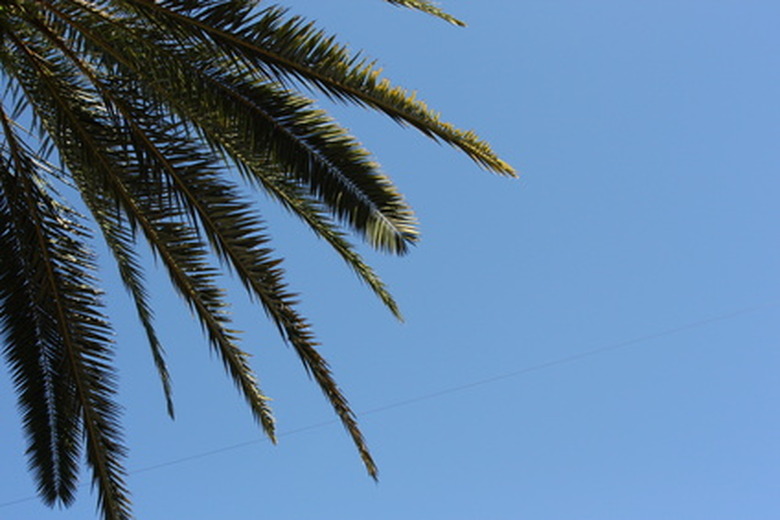What Are Palm Tree Fronds?
We may receive a commission on purchases made from links.
When you imagine lush tropical scene, you probably envision a scene with lush green palm fronds delicately swaying in the breeze. Typically found on the crown (the top) of a palm tree, these fronds grow in a variety of sizes and shapes. No matter their exact structure though, their distinct look makes these leaves almost immediately identifiable as part of a palm tree. These, along with the way tree's unique trunks, are the main anatomical characteristics that distinguish the tropical and sub-tropical palm tree family, categorized under the scientific name Arecaceae.
What Is a Frond?
What Is a Frond?
Palm fronds are the foliage on palm trees, and they come in a wide range of shapes and sizes. Despite there being over 3,000 palm species, including fruit varieties such as dates and coconuts, palm leaves come in only four main types or structures: pinnate, palmate, bipinnate, and entire. Those four types describe the general structure of the leaves, which include featherlike, fanlike, and fishtail shapes.
Types of Palm Tree Fronds
Types of Palm Tree Fronds
Pinnate leaves are the most common form of frond and are most likely what you think of when you picture a palm tree. The foliage resembles a feather and is divided at the end into individual leaflets. There is a thick, central rib in pinnate leaves with the leaves emerging along it. In contrast, palmate leaves show up on the fan palms. The leaf parts, divided into segments, are set in a circle and come from a central area, radiating outward.
Bipinnate fronds are unusual and resemble a fish tail. They have a similar structure to feather palm leaves, but they're divided into two sections. Another rare structure is an entire leaf, which looks like a pinnate leaf but doesn't divide at the ends into individual leaf sections. Only five palms have entire leaves.
How Palm Tree Fronds Grow
How Palm Tree Fronds Grow
Fronds can take three to five years to mature. A 2:1 ratio of juvenile to mature fronds ensures that there is a constant supply available to provide food to the tree. The bud area of the crown holds the developing fronds. As an old frond dies, a new one emerges.
The new fronds emerge from the top of the crown, so the mature older fronds are always those held at the bottom of the foliage like a skirt. Some palm trees are "self-cleaning." This means the old fronds fall off, separating cleanly from the palm tree. Others require pruning with sharp, sanitized pruning tools to remove old growth.
Emerged Growth Habit
Emerged Growth Habit
The way the fronds position themselves after they emerge indicates the species of the palm. Some fronds hold themselves in clusters or tufts off the trunk. Very few palms actually branch out from the base, and fronds form there.
Most fronds are arching and singular or aerial-branching. The fronds on these palms are arranged in regular intervals along the stem. When they fall off, they leave characteristic scars on the trunk.
Appearance of a Frond
Appearance of a Frond
Palm tree fronds emerge folded up and comprise an area called the cabbage. In some smaller palm tree species, this part is an edible delicacy. After the young leaf unfurls, it presents with a thick stem that is notched or serrated, then the sheath and the petiole appear. Any of these areas can also bear spines.
Some fronds are only inches long, while other are many feet across. The color of a frond depends on the species, but most are a waxy green with a gray or brownish-green tone on the underside. The fronds can be matte or shiny, thick or thin in composition. The petiole graduates to the separated ends of the foliage, which spread out in a fan shape.
